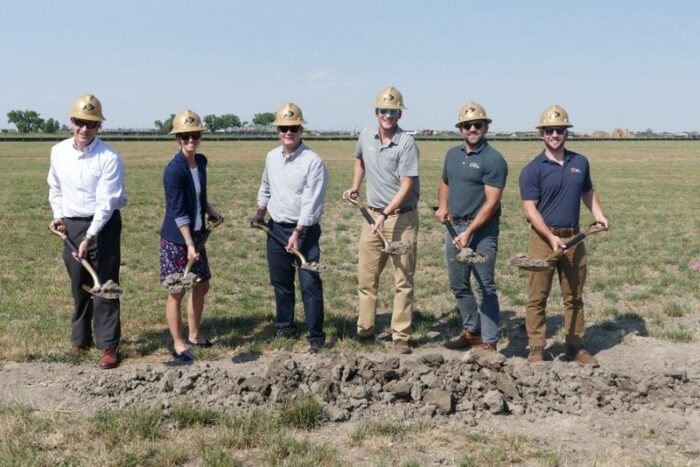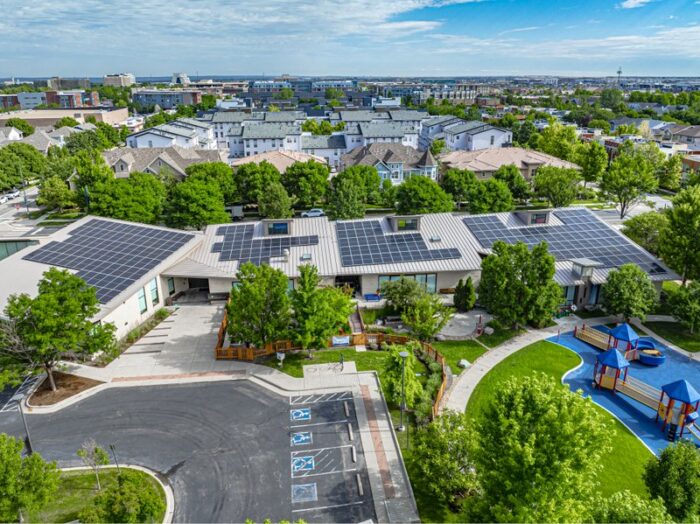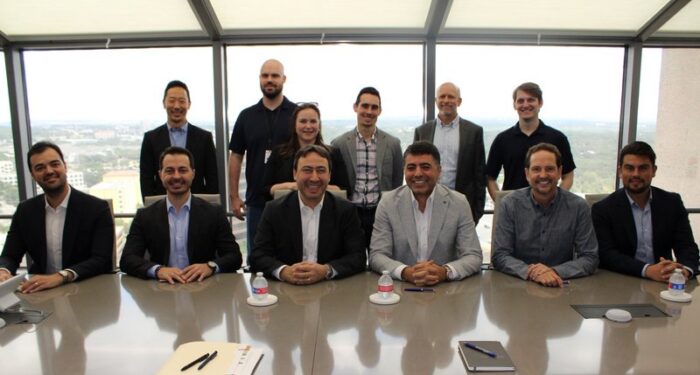Indigenous-led partnership expands solar sovereignty in Montana | Projects Weekly

This Projects Weekly stretches from tribal lands in Montana to a university-backed array in Colorado, a nonprofit rooftop system in Denver, and a massive floating solar initiative in Texas. The diversity of applications is great: powering off-grid buffalo caretakers, cutting costs for children’s services, advancing carbon neutrality goals, and turning reservoirs into renewable energy assets.
Indigenous-led partnership expands solar sovereignty in Montana
Indigenized Energy, a Native-led nonprofit advancing tribal energy sovereignty, and Freedom Forever, a national solar provider, have completed their third joint solar project—an off-grid solar and battery system on the Northern Cheyenne Reservation in Montana. The system now powers a remote buffalo caretaker site, providing reliable, emissions-free electricity to a culturally significant location with no grid access.
This latest installation builds on earlier projects with the Oglala Sioux and Chippewa Cree communities. Each reflects a commitment to Indigenous self-determination, long-term community benefit, and environmental stewardship.
“Our goal has always been to empower our communities with tools that help them thrive,” said Cody Two Bears, founder and CEO of Indigenized Energy. “Solar is more than just energy—it’s sovereignty, it’s sustainability, and it’s hope.”
Freedom Forever COO Brian Eglsaer emphasized the company’s role in adapting solar to rural, remote, and often contractor-scarce settings: “These projects aren’t just solar installations—they’re powerful steps toward long-term change for tribal communities.”
The partnership has also produced Good Energy, a documentary highlighting solar trainees, elders, and the movement for energy sovereignty. With more projects in the pipeline and ties to the national Solar for All program, the collaboration continues to grow, placing trust, opportunity, and Native leadership at the center of clean energy development.
Costco tests off-grid future with modular solar microgrid

At its Norwalk, Connecticut warehouse, Costco has launched a solar and battery microgrid designed by Trinity Energy. The modular system powers the standalone tire center entirely off the grid, producing up to 2 MWh per day and demonstrating how large-scale retailers can shift from grid dependency to on-site energy control.
“This partnership is helping us lead the way toward greater energy independence,” said Shay Reed, assistant general merchandising manager at Costco Wholesale.
The microgrid combines solar generation, battery storage, and inverters into one integrated system. Trinity describes the approach as “fast, flexible, and scalable,” capable of adapting to sectors from fleet depots to multi-family housing. By embedding software with hardware, the company aims to provide customers with a rigorously tested, intelligent system that meets both immediate needs and future growth.
The project also highlights the growing tension between surging demand—driven by EV adoption and AI infrastructure—and the limits of traditional grid expansion. For Trinity, off-grid deployments are not only sustainability tools but risk-management assets.
“This isn’t just about providing clean energy, it’s about redefining energy as a strategic asset,” said Darin Leonard, president of Trinity Energy.
The Connecticut project signals Costco’s interest in microgrids as both sustainability solutions and business resilience measures, while showcasing Trinity’s momentum in bringing off-grid infrastructure to market.
CU Boulder expands climate goals with 5-MW solar site

Pivot Energy has broken ground on a 5-MWdc virtual net metering solar project in Weld County, Colorado, for the University of Colorado Boulder. The project, expected online in early 2026, will support CU Boulder’s Climate Action Plan targets to cut Scope 2 emissions by 50% by 2030 and reach carbon neutrality by 2050.
Through a 20-year subscription agreement, CU Boulder will receive credits for the electricity produced, along with 100% of the renewable energy credits, making the initiative cost-neutral.
“This partnership with Pivot Energy is a powerful example of how CU Boulder is leading with purpose,” said Chancellor Justin Schwartz. “We’re not just talking about sustainability—we’re building it into the fabric of our operations.”
The array will produce an estimated 9.5 million kWh annually—enough to power 850 homes or offset 1,580 cars’ worth of emissions each year. Agrivoltaics will also be part of the design, with 100 sheep providing grazing services during the growing season, offering a secondary benefit for a local rancher.
Pivot Energy will develop, own, and operate the site, with approximately 8,000 panels spread across land equal to four football fields. The combination of clean power, operational savings, and agricultural integration makes the project a model for multipurpose solar development in Colorado.
Denver nonprofit stacks incentives for rooftop solar savings

The Anchor Center for Blind Children, a Denver-based nonprofit serving visually impaired children, has completed a 128-kW rooftop solar system designed and installed by Namaste Solar. The array is projected to save the organization more than $1 million over 30 years—savings that can be redirected to its nationally recognized early intervention and family support programs.
Funding was pieced together from multiple sources: a $244,000 grant from the City of Denver’s Renewables and Resiliency program, $139,356 in renewable energy credits from Xcel Energy, $14,550 from Xcel’s Solar Rewards for nonprofits, and about $110,000 in federal Elective Pay credits under the Inflation Reduction Act. The system is expected to yield $547,487 in utility savings across its lifetime.
“This project is about so much more than solar panels,” said Meghan Klassen, executive director of Anchor Center. “It’s about ensuring that more children receive the life-changing services they need.”
Namaste Solar highlighted the project as a model for community empowerment. “Anchor Center is transforming lives, and we’re proud to be their partner in creating long-term savings through renewable energy,” said Rachel Mountain, co-owner and director of commercial sales.
The installation also created over 15 local jobs, showing how nonprofit solar can deliver both mission-driven impact and economic value.
Texas deal doubles down on utility-scale partnerships

OCI Energy has closed the sale of its 100-MWac Lucky 7 Solar project in Hopkins County, Texas, to Sabanci Renewables. This follows last month’s sale of the 120-MWac Project Pepper, marking two back-to-back transactions that strengthen the partnership between the two companies in the ERCOT-North market.
Spanning 745 acres, Lucky 7 Solar is expected to enter commercial operation in 2027. Together, the two projects underscore Sabanci’s strategy of expanding U.S. renewable assets under its “Bridge to a Better Future” vision.
“Our expanding collaboration with Sabanci Renewables reflects both companies’ commitment to delivering high-impact, long-lasting clean energy projects,” said Sabah Bayatli, president of OCI Energy.
Sabanci CEO Tolga Kaan Doğancıoğlu noted that the acquisition aligns with the group’s 100-year legacy of responsible growth. The companies also signaled interest in future joint projects across Texas.
Castillo Engineering explains engineering challenges on six-site Illinois portfolio

Recon Corporation has tapped Castillo Engineering for a suite of engineering services across six utility-scale solar projects in Illinois. The portfolio spans locations including Manteno, Elburn, and Franklin Grove, with Castillo delivering power system studies, structural calculations, pad design, relay settings, and PVsyst modeling.
CEO Christopher Castillo emphasized the trust built over prior collaborations: “Our continued partnership reflects the trust we’ve built and the consistency we bring to complex, multi-site portfolios.”
Several sites presented challenges. Central gas pipelines limited electrical routing, with only two permitted conduit crossings available at multiple locations. Castillo adjusted designs to stay code-compliant while optimizing system performance. At Franklin Grove, additional environmental measures were required to protect wetlands, leading to repositioned customer poles that preserved compliance and avoided impacts.
Recon project manager Jackson Maxwell credited Castillo’s adaptability: “Their ability to deliver quality engineering under tight constraints and diverse site conditions has made them one of our most trusted partners.”
Floating solar planned across Texas reservoirs
Diamond Infrastructure Solutions and Third Pillar Solar have signed an exclusive agreement to develop utility-scale floating solar projects across Diamond-owned reservoirs in Texas. The initiative, the first of its kind in North America, could exceed $700 million in investment and deliver up to 500 MW of clean energy.
Floating solar offers dual benefits: generating power on previously unused surfaces while reducing water evaporation. Diamond estimates a potential conservation of 15% of freshwater otherwise lost each year in a water-stressed region.
“Our agreement with Third Pillar marks a bold step forward in how we think about infrastructure and sustainability,” said Ed Noack, CEO of Diamond Infrastructure Solutions.
Planned for completion by decade’s end, the projects are expected to support hundreds of jobs and spur local supply chain opportunities.
Third Pillar CEO Jaimeet Gulati described the agreement as a showcase for floating solar’s potential to preserve land, generate cost-competitive energy, and minimize visibility impacts. If completed as proposed, the projects would be the largest floating solar installations in the Americas.
Geronimo Power breaks ground on 125-MW Michigan project
Geronimo Power has started construction on its Jackson County Solar project in Michigan, a 125-MW addition to its growing Midwestern Independent System Operator (MISO) portfolio. Once operational, Jackson will generate enough energy to power 33,600 homes annually and offset 161,300 metric tons of CO₂ emissions—the equivalent of removing 37,600 cars from the road.
“As a company founded on a farm in the rural Midwest, I’m thrilled to see our MISO footprint continue to grow,” said Joe Ibrahim, vice president of construction. “The addition of the Jackson project will bring more than $70 million in total economic benefit.”
Barnhart Energy Company is serving as EPC, with an estimated 300 construction and service jobs tied to the build. Over 20 years, the project is expected to produce $28 million in new tax revenue distributed among local governments and schools.
Geronimo’s MISO presence now nears 1 GW of capacity, including the recently announced 250-MW Portage Solar project in Wisconsin. In total, the company has developed more than 2.5 GW across the region, delivering more than $275 million in tax revenue to local communities.





Comments are closed here.